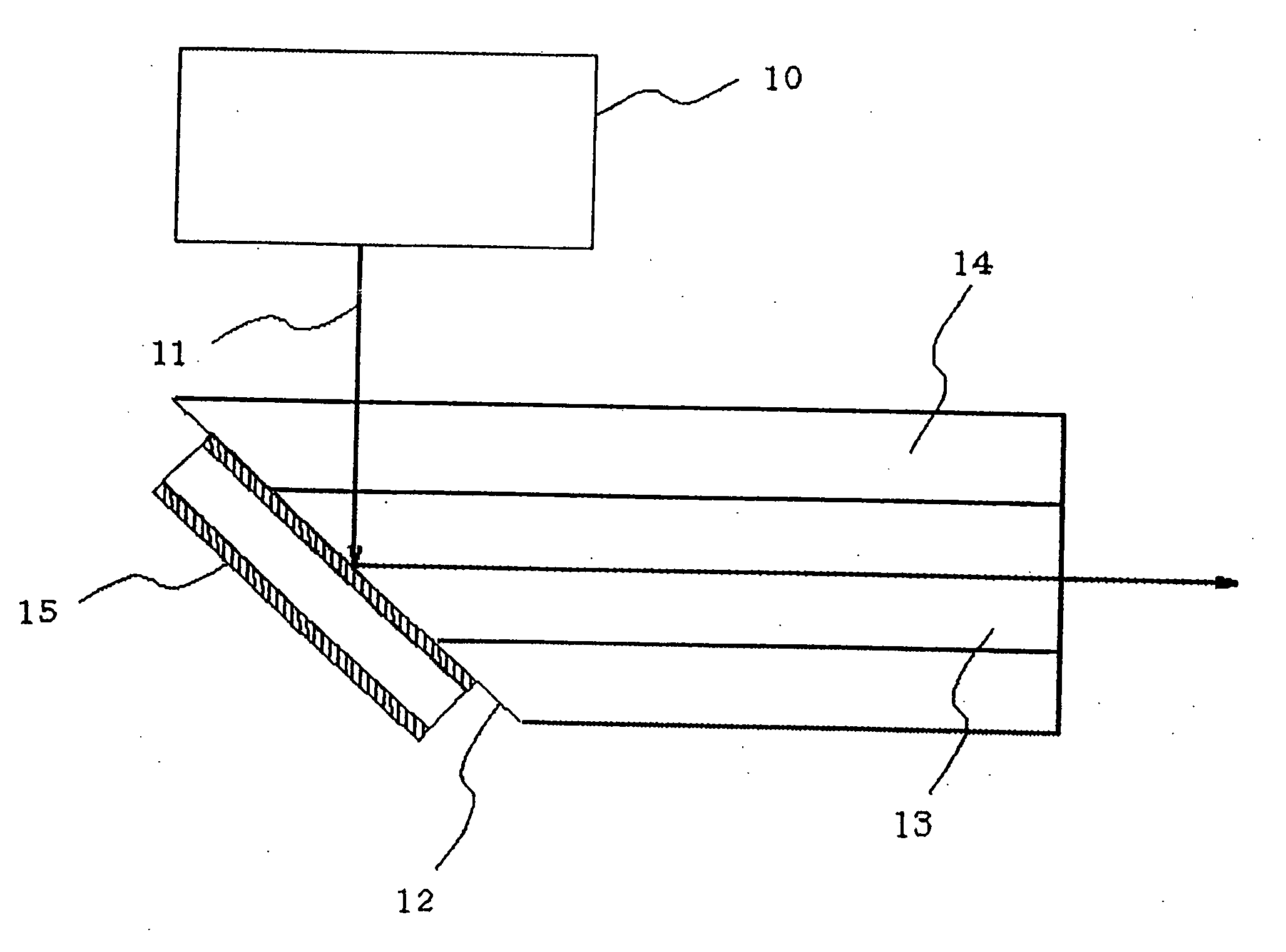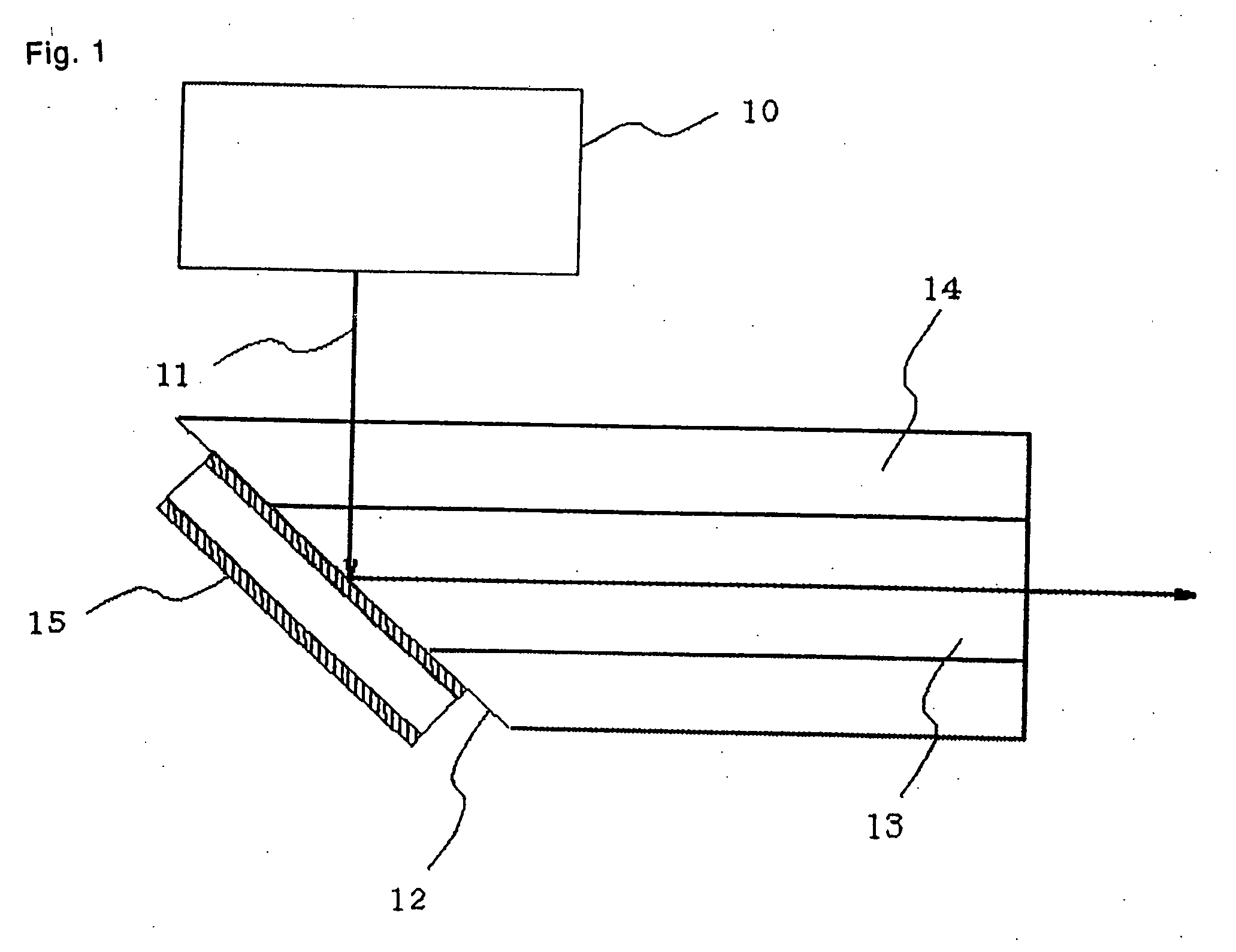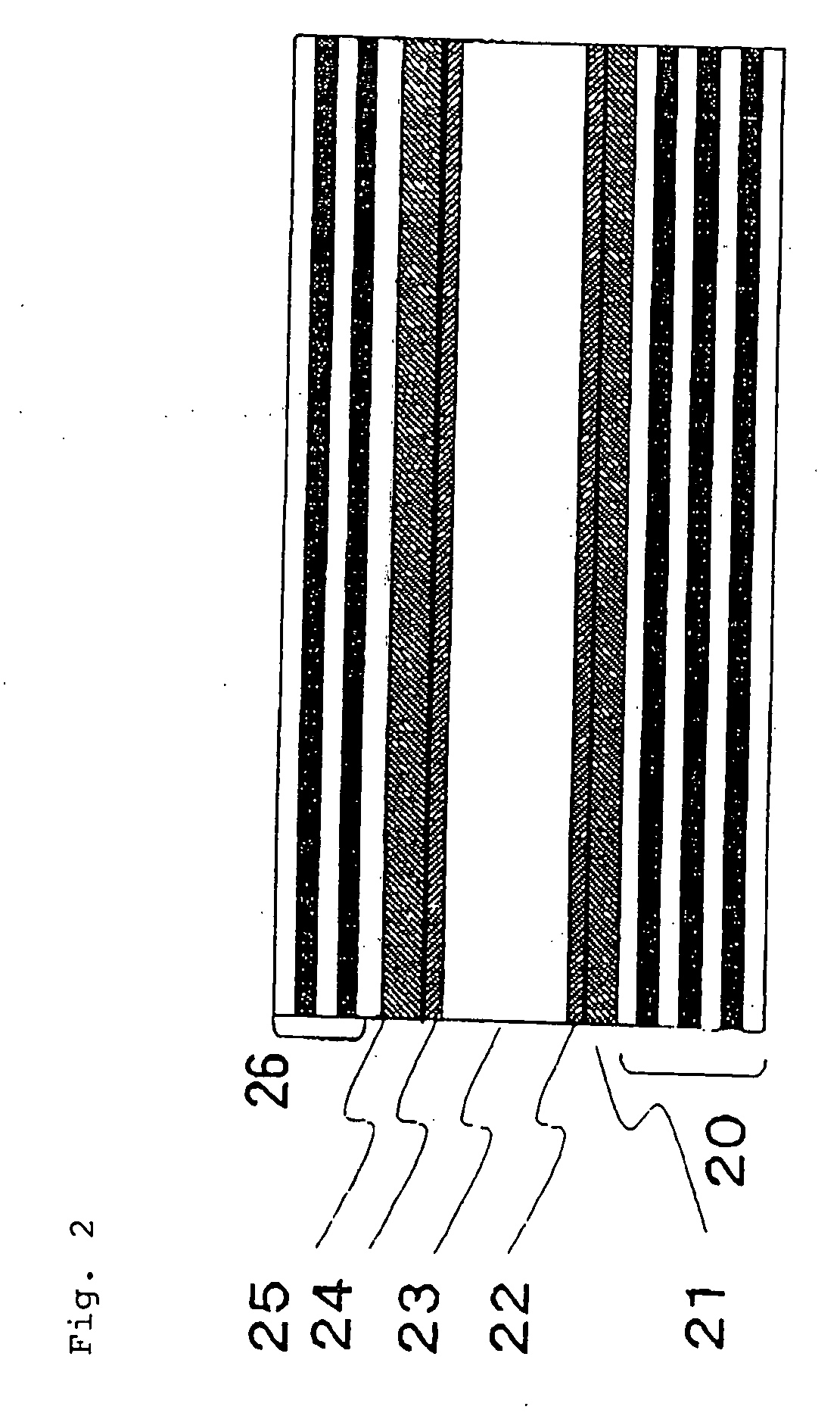Optical modulator and method of manufacturing same
a technology of optical modulators and manufacturing methods, applied in multiplex communication, semiconductor lasers, instruments, etc., can solve problems such as inability to respond to demand, inability to meet demand, and inability to communicate infrastructure, etc., to achieve low driving voltage, facilitate impedance matching, and high sensitive
- Summary
- Abstract
- Description
- Claims
- Application Information
AI Technical Summary
Benefits of technology
Problems solved by technology
Method used
Image
Examples
first embodiment
[0061]FIG. 1 illustrates the configuration of a first embodiment of a optical modulation system which includes an optical modulator according to the present invention. Laser light 11 emitted from vertically confined surface emitting laser (VCSEL) 10 is incident on a side surface near an end of optical waveguide 12. Optical waveguide 12 comprises core layer 13, and cladding layer 14 surrounding core layer 13. An end region of optical waveguide 12 is processed by polishing to taper at an angle of 45°, and optical modulator 15 is formed on the polished surface. Optical modulator 15 is placed at such a position that light reflected thereby enters core layer 14 of optical waveguide 12.
[0062] Optical modulator 15 comprises a Fabry-Perot resonator. Light incident on optical modulator 15 repeatedly reflects within and interferes with optical modulator 15, causing a change in the intensity ratio of straight ahead transmitted light to 90° reflected light in accordance with an optical path le...
second embodiment
[0097]FIG. 12 illustrates the configuration of a second embodiment of a optical modulation system according to the present invention. Laser light 121 emitted from vertically confined surface emitting laser (VCSEL) 120 is incident on optical modulator 112. Optical modulator 122 is similar in configuration and action to the first to fourth examples of the optical modules described in the first embodiment.
[0098] Optical modulator 122 is formed on the side surface of pyramidal protrusion 124 created on substrate 123. While substrate 123 is made of Si, substrate 123 may be formed of quartz or the like. The shape of pyramidal protrusion 124 can be formed by anisotropic etching of Si. Alternatively, a metal member in a pyramidal shape fabricated by compression molding may adhere to substrate 123 to form protrusive shape 124. Further alternatively, protrusive shape 124 may be formed on substrate 123 by direct molding of low melting point glass. VCSEL 120, optical modulator 122, and optical...
third embodiment
[0099]FIG. 13 illustrates the configuration of a third embodiment of the optical modulation system according to the present invention.
[0100] Laser light 131 emitted from vertically confined surface emitting laser (VCSEL) 130 is incident on optical modulator 132. Optical modulator 132 is formed on the side surface of pyramidal protrusion 134 disposed on substrate 133.
[0101] The side surface of protrusion 134, on which optical modulator 132 is disposed, is shaped into a two-dimensional concave. Optical modulator 132 is in an arcuate shape, as viewed in cross-section, so that the convex of optical modulator 132 fits the shape of the concave of protrusion 134. Light which has undergone optical modulation and travels towards optical waveguide 135 is focused by the concave shape of optical modulator 132. The curvature of the concave shape of optical modulator 132 is set so that the light image emitted by VCSEL 130 is focused on the end surface of optical waveguide 135 and the focused si...
PUM
| Property | Measurement | Unit |
|---|---|---|
| frequency | aaaaa | aaaaa |
| Modulation frequencies | aaaaa | aaaaa |
| thickness | aaaaa | aaaaa |
Abstract
Description
Claims
Application Information
 Login to View More
Login to View More - R&D
- Intellectual Property
- Life Sciences
- Materials
- Tech Scout
- Unparalleled Data Quality
- Higher Quality Content
- 60% Fewer Hallucinations
Browse by: Latest US Patents, China's latest patents, Technical Efficacy Thesaurus, Application Domain, Technology Topic, Popular Technical Reports.
© 2025 PatSnap. All rights reserved.Legal|Privacy policy|Modern Slavery Act Transparency Statement|Sitemap|About US| Contact US: help@patsnap.com



